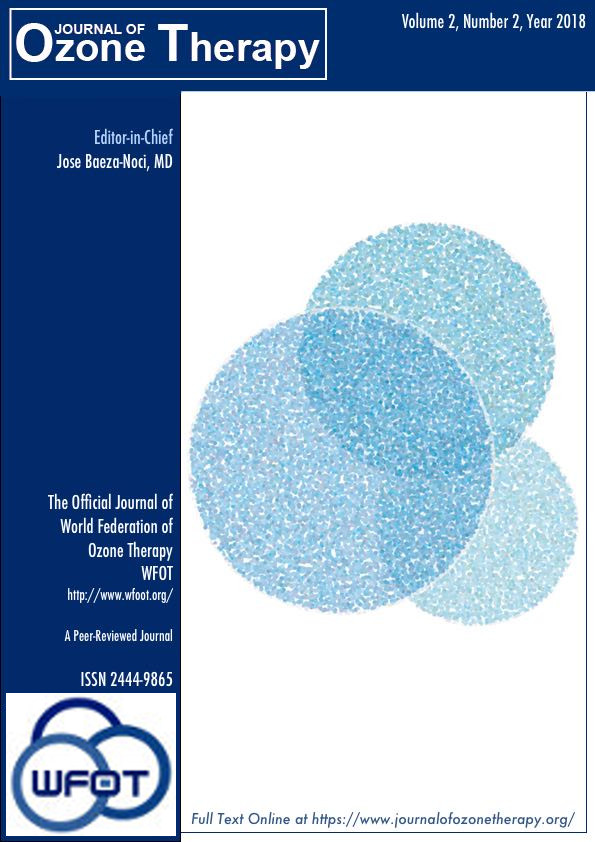Efficacy and safety of Ozone Therapy for patients with chronic hepatitis B: A multicenter, randomized clinical trial [abstract]
DOI:
https://doi.org/10.7203/jo3t.2.2.2018.11131Palabras clave:
ozone therapy, hepatitis B, radomized control trial Resumen
Resumen
Background.
Ozone therapy has a long history. Some studies proved that ozone therapy was useful in treatment of virus hepatitis.Objective: To evaluate the efficacy and safety of new medical ozone therapy system for the treatment of chronic hepatitis B. Method. One hundred eighty-nine patients with chronic hepatitis B were included in this open-label, phase 3 study, and randomly assigned to receive ozone autohemotherapy with experimental ozone generator TianYi (group 1) or with ozone generator Humares (group 2) or oral diammonium glycyrrhizinate capsules (group 3) in a 1:1:1 ratio for 12 weeks. The primary efficacy end point was sera HBV DNA level of less than 1×103 IU/ml or having a more than 2 log10 reduction in HBV DNA level at the end of 12 weeks treatment as compared to baseline HBV DNA level. Secondary end points included HBeAg seroconversion, biochemical response, and combined response. Results. At the end of 12 weeks treatment, the proportion of patients reached the primary end point of virologic response in group 1, group 2, and group 3 were 22.4% (13/58, 95% CI, 12.5 to 35.3), 14.7 (9/61, 95% CI, 7.0 to 26.2) and 3.9% (2/51, 95% CI, 0.5 to 13.5), respectively (p=0.021) in the pre-protocol population. Virologic response occurred in more patients receiving ozone therapy with experimental device than patients receiving oral diammonium glycyrrhizinate capsules (mean difference 18.5%, 95% CI 6.3 to 31.5, p=0.005). However, there was no statistical difference in VR12 rates between the treatment of medical ozone therapy system with experimental device (group 1) and with Humares (group 2) (mean difference 7.7%, 95% CI -6.5 to 22.0, p=0.282). More HBeAg seroconversion in patients treated by Tianyi ozone therapy system than those treated by Humares ozone therapy device and oral diammonium glycyrrhizinate capsules (14.8%, 5.1% and 7.3%, respectively, P = 0.272). Higher biochemical response rate was observes in patients receiving ozone therapy than oral diammonium glycyrrhizinate capsules (31.6%, 36.7% and 24.0%, respectively, p = 0.359). The safety profile was similar for the three treatment groups and adverse events were .scare infrequent and mild. Conclusions. Ozone therapy had superior antiviral efficacy with a similar safety profile as compared with oral diammonium glycyrrhizinate capsules through week 12 treatment. Ozone therapy is also associated with normalized ALT and AST levels, demonstrating that ozone therapy could benefit the patients with chronic hepatitis B.
 Descargas
Descargas
Descargas
Publicado
Cómo citar
-
Resumen2591
-
PDF 493
Número
Sección
Licencia
Journal of Ozone Therapy publica bajo la licencia Creative Commons Attribution-NonCommercial 4.0 International License.




